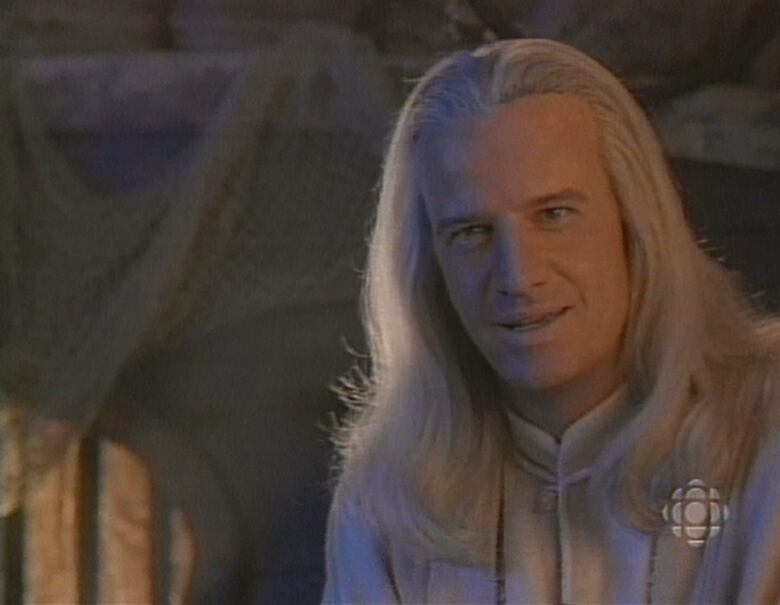Why critics panned Mortal Kombat as a video game and a movie in the '90s
Home version of arcade game with 'lots of blood' was selling briskly in 1993
The graphics weren't sophisticated, but the violence in the video game Mortal Kombat was too graphic for some critics in 1993.
"Lots of blood, lots of heads rolling," was how CBC reporter Stu Paterson described the game as two characters were seen on viewers' screens.
The Sega video game had only been available at the arcade — until what Paterson said had been dubbed "Mortal Monday" in September that year.
"Nintendo has also issued a version of Mortal Kombat today," he explained. Nintendo made consoles for home video game play.
Almost 30 years later, in April 2021, the Mortal Kombat name is back in popular culture as a movie. According to Variety magazine, "the story follows a washed-up MMA fighter who is unaware of his hidden lineage and why he's being hunted down by a clan of assassins."
What the movie has in common with the game that inspired it can be summed up in one word: violence. According to the Internet Movie Database, the Motion Picture Association rated it R for "strong bloody violence."
Violence 'as a form of conflict resolution'

"It's a one-on-one fighting game," explained Bill Malice, a "video game aficionado" who was seen inside a video game store with Rose Dyson of an organization called Canadians Concerned about Violence in Entertainment.
Both were looking at a monitor showing the game as Malice played it and Dyson recoiled at what she saw on the screen.
"You begin by facing your opponent one-on-one and using special weapons or kicks or punches to defeat him," he said. "I can either punch him over, knock him over, or completely finish him by knocking his head off."
Considering that level of violence, Paterson's voice-over asked if Mortal Kombat could "really be suitable for kids."
Dyson didn't think so, noting the game was "training them" to enjoy and like violence "as a form of conflict resolution."
"The mere idea that you would enjoy blowing your opponent's head off is a problem," she said.
But Malice, who told Paterson there were U.S. studies that had shown that video gamers were less likely than others to have a heart attack, disagreed.
"This is fantasy. This is not reality," he said. "I don't believe people could punch somebody's head off if they tried."
'It was inevitable'
Two years later, the "very successful" Mortal Kombat had become more than a video game, noted Tina Srebotnjak, host of CBC's Midday.
"It was inevitable that one day, a video game would inspire a movie," she said, introducing the show's resident movie critic, Tom New, on Aug. 23, 1995.
An excerpt from the film explained its premise: a trio of warriors had been "chosen to defend the realm of Earth in a tournament called Mortal Kombat," said a character portrayed by French actor Christopher Lambert.
"We all know the tournament will be staged at the box office," said New, who added that every year in North America, more money was spent on video games than at movie theatres — and that video game players were sure to shell out for the film.
"A big chunk of the budget obviously went into set design and various graphics programs," said New, who also called the special effects "cool" and the visual effects "fascinating."
But that where New's praise ended. He said the world of Mortal Kombat was "so thin ... you don't buy it for a minute. Unless possibly you're a male between the ages of nine and 12."
"Mortal Kombat rates three out of 10," he concluded.



